Understanding Alcohol Content In Champagne
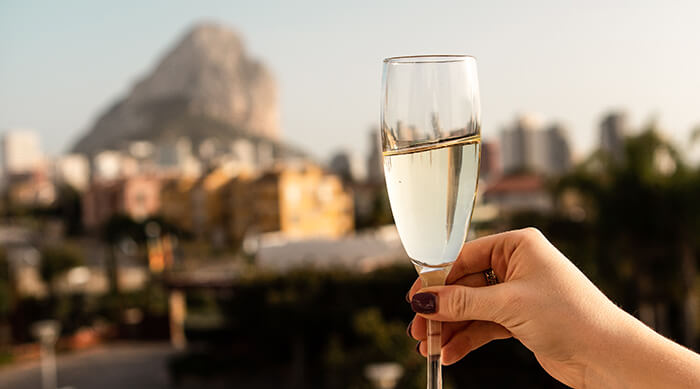
Understanding the alcohol content in Champagne is crucial for wine enthusiasts and those who want to enjoy a glass responsibly. Champagne typically contains an alcohol by volume (ABV) between 11.5% and 12.5%. Being aware of this range allows individuals to make informed decisions about their drinking choices. The ABV in Champagne can vary based on factors such as grape variety, sugar levels, and fermentation methods. By understanding the alcohol content, individuals can better appreciate the taste and flavor profile of their Champagne and ensure they enjoy it responsibly.
Importance Of ABV (alcohol By Volume) In Champagne
Understanding the alcohol content in Champagne is crucial for wine enthusiasts and those who want to enjoy a glass responsibly. The ABV (Alcohol By Volume) provides information about the strength and potency of the wine. It helps individuals gauge their alcohol intake and make informed decisions about their drinking choices. By knowing the ABV, Champagne drinkers can understand the potential effects it may have on their body, such as intoxication levels. This knowledge allows for responsible consumption and ensures a pleasurable and enjoyable experience with Champagne.
Factors Influencing The Alcohol Content In Champagne
The alcohol content in Champagne is influenced by several factors, including the grape variety used, the ripeness of the grapes at harvest, and the winemaker’s decisions during the production process. Different grape varieties have varying sugar levels, which in turn affect the potential alcohol content. Riper grapes generally have higher sugar levels, leading to higher alcohol content in the finished wine. The winemaker’s choice of yeast strains, fermentation temperature, and aging techniques also play a role in determining the final alcohol content. these factors ultimately contribute to the unique characteristics and flavor profile of the Champagne.
Typical Alcohol Content In Champagne
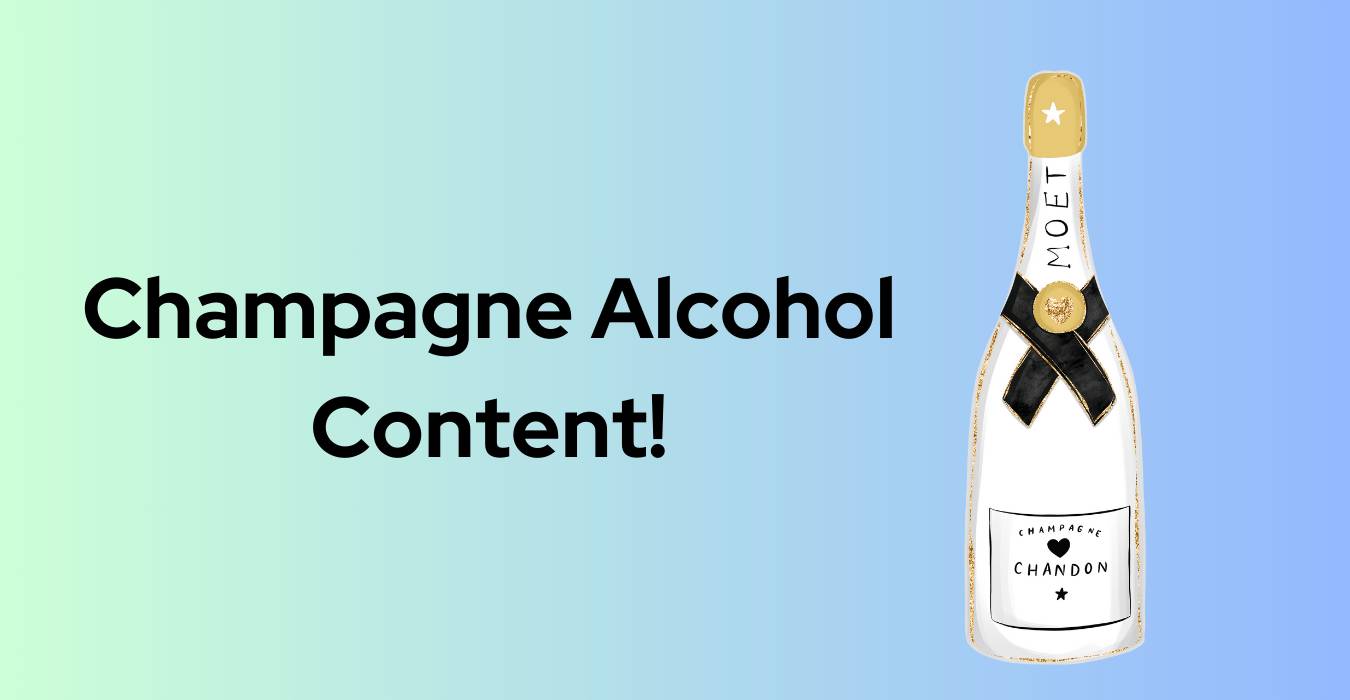
Champagne typically has an alcohol content of around 12% ABV (alcohol by volume). This falls slightly higher than the average alcohol content of wine, which is about 11.6% ABV. Compared to beer, which has an alcohol content closer to 5% ABV, Champagne packs a more significant punch. The double fermentation process involved in making Champagne contributes to its higher alcohol content. It’s important to be aware of the alcohol levels in Champagne to enjoy it responsibly and make informed choices about consumption.
Average ABV Range In Champagne
The average alcohol by volume (ABV) range in Champagne generally falls around 12%. However, it is important to note that the ABV can vary slightly depending on the specific Champagne producer and style. Some Champagnes may have a slightly lower ABV of around 11%, while others may have a higher ABV of around 13%. These variations in ABV can be influenced by factors such as grape variety, fermentation process, and the level of residual sugar in the Champagne. When choosing Champagne, it is always a good idea to check the label for the specific ABV to ensure you are selecting a Champagne that aligns with your preferences.
Variations In Alcohol Content Based On Champagne Styles
The alcohol content in Champagne can also vary based on the specific style of Champagne. Here are some key variations to note:
- Non-Vintage Champagne: Non-vintage Champagnes, which are blends of multiple years, generally have an ABV ranging from 11.5% to 12.5%. These Champagnes aim for a balanced and consistent flavor profile.
- Vintage Champagne: Vintage Champagnes, made from grapes harvested in a specific single year, often have a slightly higher ABV, typically around 12.5% to 13.5%. These Champagnes tend to showcase the characteristics of that particular vintage.
- Rosé Champagne: Rosé Champagnes, which get their pink hue from the inclusion of red grape skins during fermentation, can have a similar ABV range as other Champagne styles, typically falling between 11.5% and 12.5%.
- Blanc de Blancs and Blanc de Noirs Champagne: Blanc de Blancs Champagne, made solely from white Chardonnay grapes, and Blanc de Noirs Champagne, made from dark-skinned Pinot Noir or Pinot Meunier grapes, can have a slightly higher ABV. They may range from 12.5% to 13.5%.
These variations in alcohol content highlight the diversity and complexity of the Champagne world and provide options for different flavor preferences.
Reading Champagne Labels For ABV
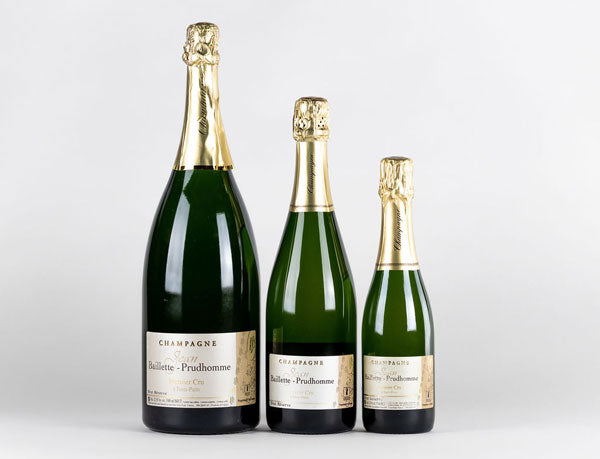
Reading Champagne Labels for ABV:
When looking at a bottle of Champagne, it is important to know how to read the label to determine the alcohol content. The key information to look for is the ABV, which stands for Alcohol By Volume. This is typically represented as a percentage and indicates the amount of alcohol in the bottle. Common alcohol by volume percentages in Champagne range from 11% to 12.5%. By checking the ABV on the label, consumers can make informed decisions about the strength of the Champagne they are purchasing, ensuring it aligns with their preferences.
Interpreting ABV Percentage On Champagne Bottles
Interpreting the ABV percentage on Champagne bottles is essential for understanding the strength of the wine. The ABV, or Alcohol By Volume, is represented as a percentage and indicates the amount of alcohol present in the bottle. To interpret the ABV percentage, one can refer to the label, where it is usually mentioned. Typically, Champagne ranges from 11% to 12.5% ABV. A higher percentage suggests a stronger and more potent Champagne, while a lower percentage indicates a lighter and less alcoholic wine. By considering the ABV, individuals can make educated choices suited to their preferences and occasion.
Label Terminology Related To Alcohol Content
When reading Champagne labels, there are specific terms related to alcohol content that can provide further insight. Some common label terminology includes:
- ABV: ABV stands for Alcohol By Volume and is expressed as a percentage. It indicates the amount of alcohol present in the Champagne.
- Brut: Brut is a term used to designate Champagne with a dry taste. It generally has an ABV of around 12%.
- Extra Brut: Extra Brut Champagne has an even lower level of residual sugar, resulting in a drier taste. It typically has an ABV similar to Brut Champagne.
- Demi-Sec: Demi-Sec refers to Champagne with a sweeter taste due to a higher level of residual sugar. It usually has an ABV of around 12%.
By understanding these label terms, individuals can better navigate the alcohol content and choose Champagnes that align with their preferences.
Effects Of Alcohol Content On Champagne
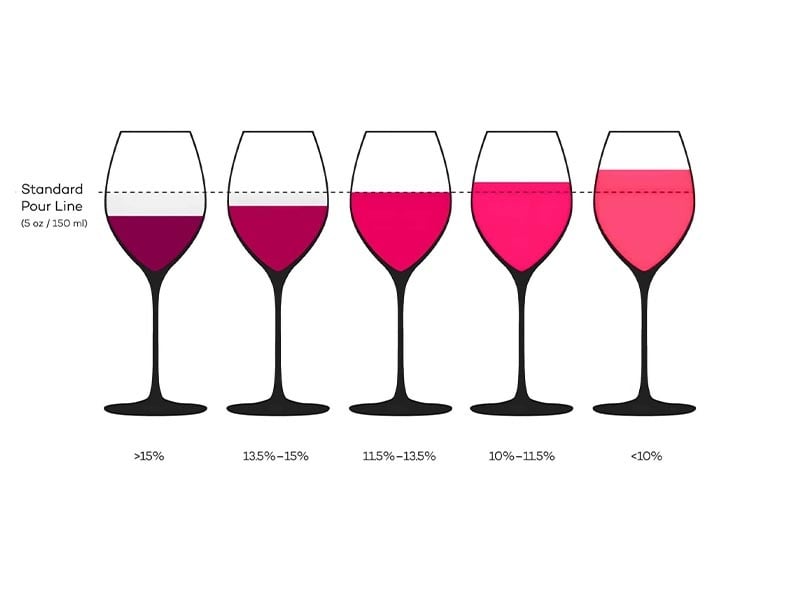
The alcohol content in Champagne has various effects on the overall taste and flavor profile of the beverage. A higher ABV can contribute to a more intense and robust flavor, with a stronger alcoholic presence. On the other hand, lower ABV champagnes may have a lighter and more delicate taste. The alcohol content can also impact the mouthfeel, with higher ABV champagnes often feeling fuller and more viscous. It’s important to consider the effects of alcohol content when pairing Champagne with food, as certain dishes may be better suited to champagnes with different levels of alcohol.
Impact Of ABV On Taste And Flavor Profile
The ABV (Alcohol By Volume) of Champagne has a significant impact on its taste and flavor profile. A higher ABV can contribute to a more intense and robust flavor, with a stronger alcoholic presence. It can also add a certain warmth and richness to the Champagne. On the other hand, lower ABV Champagnes may have a lighter and more delicate taste. The alcohol content can also affect the mouthfeel, with higher ABV Champagnes often feeling fuller and more viscous. It is important to consider the effects of alcohol content when selecting a Champagne to ensure it pairs well with your desired taste preferences.
Alcohol Levels And Champagne’s Pairing Versatility
Alcohol levels in Champagne play a crucial role in its pairing versatility. The varying ABV percentages allow for different styles of Champagne to complement a wide range of foods. Subtle and lighter champagnes with lower alcohol content are perfect for delicate dishes like seafood, while higher alcohol levels in full-bodied Champagnes can hold up well against rich and robust flavors like grilled meats or creamy sauces. By considering the alcohol content, you can enhance your dining experience by choosing the right Champagne to complement your meal.
Managing Alcohol Consumption With Champagne
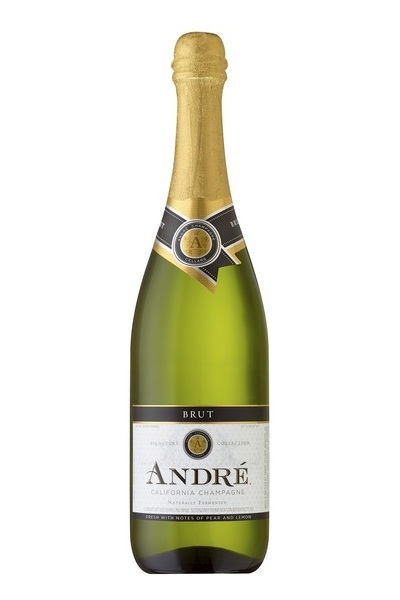
Managing alcohol consumption with Champagne is important to ensure a safe and enjoyable experience. To do so, it is crucial to understand your personal tolerance for alcohol and drink in moderation. Pace yourself and alternate between alcoholic and non-alcoholic beverages to stay hydrated. It is also helpful to be mindful of the alcohol content in the Champagne you are consuming and make informed choices. By being responsible and mindful of your alcohol intake, you can fully enjoy the celebration without overindulging.
Responsible Drinking Practices With High ABV Champagne
Responsible drinking practices should be followed when consuming Champagne with a high alcohol by volume (ABV). Here are some tips to consider:
- Pace yourself: Take your time to sip and savor the Champagne, allowing your body to adjust to the alcohol content.
- Alternate with non-alcoholic beverages: Keep yourself hydrated by alternating between Champagne and non-alcoholic drinks to maintain a healthy balance.
- Know your limits: Be aware of your personal tolerance for alcohol and avoid exceeding it. Listen to your body and stop drinking if you feel intoxicated.
- Don’t drink and drive: If you’ve consumed Champagne with a high ABV, make sure you have a designated driver or use alternative transportation options to ensure your safety and the safety of others.
By practicing responsible drinking habits, you can enjoy your Champagne experience while staying safe and in control.
Tips For Enjoying Champagne Without Overindulging
- Pace yourself: Take your time to sip and savor the Champagne, allowing your body to adjust to the alcohol content. Avoid drinking too quickly or consuming large quantities in a short period of time.
- Alternate with non-alcoholic beverages: Keep yourself hydrated by alternating between Champagne and non-alcoholic drinks. This can help dilute the alcohol and maintain a healthy balance.
- Serve in smaller portions: Opt for smaller glasses or flutes when pouring the Champagne. This can help control the amount you consume in one sitting.
- Enjoy with food: Pairing Champagne with a meal can help slow down the absorption of alcohol and prevent overindulgence. Additionally, the flavors of the food can complement and enhance the Champagne experience.
- Know your limits: Be aware of your personal tolerance for alcohol and avoid exceeding it. Listen to your body and stop drinking if you feel intoxicated.
- Don’t drink and drive: If you’ve consumed Champagne with a high ABV, make sure you have a designated driver or use alternative transportation options to ensure your safety and the safety of others.
By following these tips, you can enjoy Champagne responsibly and without overindulging.
Conclusion
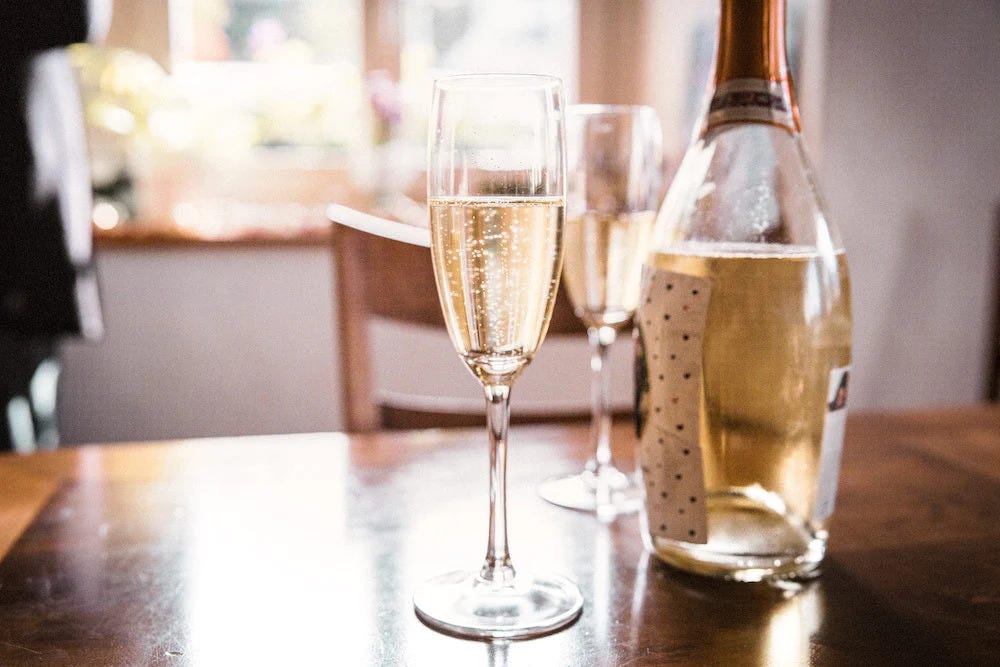
In conclusion, understanding the alcohol content in Champagne is important for making informed decisions about consumption. By checking the ABV (Alcohol By Volume) on the label, individuals can enjoy Champagne responsibly without compromising their health or judgment. It is essential to pace oneself, alternate with non-alcoholic beverages, serve in smaller portions, enjoy with food, and know personal limits to avoid overindulgence. Remember, always prioritize safety and never drink and drive.
Key Takeaways On Alcohol Content In Champagne
The alcohol content in Champagne is an important factor to consider when consuming the sparkling wine. Here are some key takeaways:
- Champagne typically has an average alcohol content of around 12% ABV.
- The alcohol content can vary based on the style of Champagne, with some styles having higher or lower ABV levels.
- It is important to read the label of the Champagne bottle to determine the specific ABV percentage.
- Moderation is key when enjoying Champagne, and it’s important to drink responsibly and know personal limits.
- Champagne can be paired with a variety of foods, enhancing the overall dining experience.
- Prioritizing safety and never drinking and driving is crucial.
FAQ About Alcohol Content In Champagne: Checking ABV
Q: What is the typical alcohol content in champagne?
A: Champagne usually has an alcohol by volume (ABV) ranging from 11.5% to 12.5%.
Q: How can one check the alcohol content in champagne?
A: To determine the alcohol content in champagne accurately, one can refer to the label on the bottle. The ABV percentage is typically provided there.
Q: Are there any tools for measuring the alcohol content in champagne at home?
A: Yes, there are alcohol meters or hydrometers available that can measure the ABV of liquids like champagne. However, it may require some expertise to use them correctly.
Q: Does the alcohol content vary among different types of champagne?
A: Yes, the alcohol content in champagne may vary depending on the specific brand, production method, and grape variety used in making the champagne.
Q: Why is it important to know the alcohol content in champagne?
A: Understanding the alcohol content in champagne helps consumers make informed decisions about consumption, especially for those who are mindful of their alcohol intake or have specific preferences for lighter or stronger drinks.
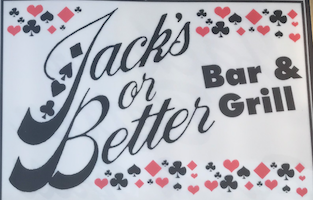
Family-owned and proudly serving the Black River Falls area since 1973. Our convenience store, bar, and restaurant within the same building are unique to the area. We accommodate our smokers with a separate facility. We are conveniently located within two miles of the interstate at the corners of Highway 12 and 27. We are your one-stop destination for a restaurant/bar and convenience store.